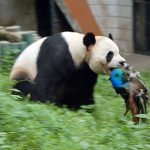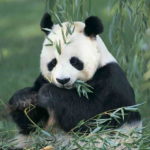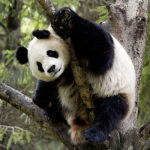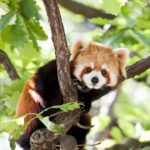Facts about pandas
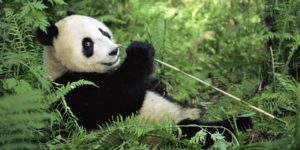 The world learned about the big and small panda only in the XIX century. The small panda was discovered by scientists in 1821. A large panda was found much later – in 1869, and it was only 68 years after the discovery that a large panda was caught.
The world learned about the big and small panda only in the XIX century. The small panda was discovered by scientists in 1821. A large panda was found much later – in 1869, and it was only 68 years after the discovery that a large panda was caught.
Since the discovery of pandas, their study has also begun. But after two centuries of research, much about pandas is still a mystery. And only not many facts about pandas became known to the whole world. We propose to get acquainted with the fifteen most interesting facts about large and red pandas.
For the first time when scientists studied a large panda they came to the conclusion that this is a giant raccoon. Only after centuries, with the help of a genetic test, scientists managed to establish that the big panda is a bear.
Red panda refers to a separate superfamily – marten, including several families: raccoon, kuni and skunks.
The main food of pandas is bamboo, but in addition to bamboo, sometimes pandas eat food of animal origin.
Both the small and the large panda have six fingers on the front paws. The sixth, thumb, helps animals capture and hold bamboo.
To prepare the cubs of large pandas for living in a natural habitat, scientists at the Chengdu Science Center, in China, wear special panda costumes. This is done so that the baby visually accustomed to similar to his relatives.
In size, a large panda is not inferior to a black bear, but is inferior in speed. While the panda can accelerate to a rapid step, the black bear develops speeds from 40 to 50 kilometers per hour.
The kids of the big panda at birth weigh only 140 grams, but already at the age of 3 months their weight reaches 4-6 kilograms.
At birth, the color of large pandas is white and only a week later the kids get their recognizable color.
Young red panda at birth have a beige color. The color of the wool, like that of an adult, the babies will acquire only for 3 months of life.
For a full life in a natural environment, a large panda needs 7-11 square kilometers of land.
Big pandas are not sold to other zoos, but are leased. For the delivery of one panda for rent, China receives 1 million US dollars annually. If the offspring are born in the zoo at pandas, it is transferred to China to restore the gene pool.
The life span of a large panda in the natural environment is from 14 to 20 years. In captivity pandas live up to 26 years.
Red panda in the wild on average lives 8-10 years. In captivity, they live up to 19 years.



